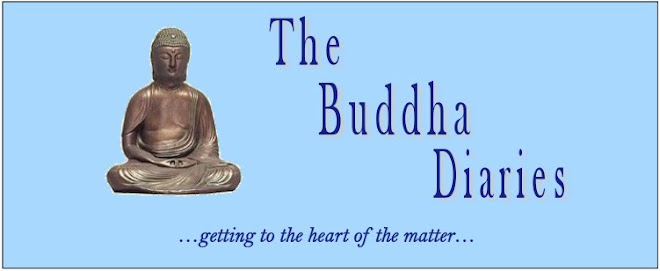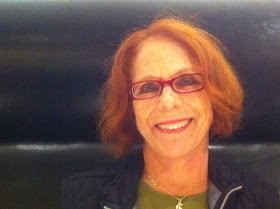So we did get there, finally. Our hotel proved
inauspicious at first sight. The website had show lush, spacious art
nouveau interiors, and indeed, the reception areas were genuine art nouveau,
with the expected carved wood framework, the stained glass, the elaborate chandeliers.
But on rather smaller scale than the images had suggested. And our
room was far from art nouveau. Still, it was home for our two nights in
Antwerp, and it served us well.
Once settled in--late afternoon by now--we ventured
out on foot to explore our neighborhood and found it to be a rather pleasant,
rather upscale one, whose central point of interest was the Musee des Beaux
Arts (sorry, I can't manage the Flemish version), now unfortunately closed for
renovation until 2017. Not much use, then, to us. But the square
around it proved to be a fine resource of sidewalk cafes and restaurants, and
good for a refreshing walk. The fish restaurant recommended by the hotel
could not offer us a table that evening, so we booked one for the following day
and found, instead, an Italian restaurant that served a good pizza, which we
enjoyed with a glass of the house wine.
This evening marked the onset of a cold which, for me, somewhat marred
the experience of Antwerp the following day. It was a longish walk from
our hotel to the town center, but a pleasant one, through mostly deserted
streets--this, by now, was Sunday, and the people of Antwerp clearly take
seriously their day of rest.
Arriving at the picturesque historic center of town, we found more activity,
stopping for a cup of coffee and a basket of bread (with quince jelly) at a
café so crowded with young people—obviously habitués all of them—that we could
hardly squeeze ourselves into a seat.
A great energy…
Once refreshed, we headed for the Museum Plantin-Moretus, the
Renaissance home and workshop of a prominent, wealthy pioneer in the printing
business. The home itself was
elegantly designed around a central courtyard and garden...
... and the tour led us
not only through the relatively sumptuous—if rather dark—living areas, but also
through the printing workshops...
... bookshop and libraries...
... offering a truly
fascinating glimpse into the extraordinarily labor-intensive business of
producing printed materials...
... in the sixteenth and seventeenth centuries. I could not help but compare it to the
incredible ease with which we spread the printed word today. Along the way, we have sacrificed
something in the way of human contact with the physical reality of a heavy tome
and the dense black ink that forms the words. Who could fail to admire the devotion and persistence it
took to actually make a printed book in those days, from the casting of the
lead to make individual letters, to the laborious type-setting and printing, to
the hand-binding process at the end?
For any readers headed toward Antwerp, it’s a truly fascinating museum,
well worth a visit.
From the Plantin-Moretus, we walked on to the “MoMu,” the Modemuseum of
fashion design, where we greatly enjoyed an exhibition of dresses designed by
Madame Gres, the “pioneer of seamless garments,” whose classical creations of
elegantly draped materials were a monument to modernism. She started out with the desire to be a
sculptor, and she remained primarily a sculptor of materials throughout her
fifty-year career. Now, displayed
on low platforms in studied groupings of mannequins and spotlighted from above...


...they offered a stunning overview of dress design since the late 1930s.


...they offered a stunning overview of dress design since the late 1930s.
I suspect that we must have had lunch somewhere, at this point. It was lunch time, and we usually don’t
forget to eat. But I sure don’t
remember where or what. Memory is
another victim of the ravages of travel. Certain things get to be a blur. So let’s conclude that lunch was in no
way memorable. But Ellie certainly drank a beer somewhere...
I do also remember that, presumably after lunch, we made our way to the Rubenshuis, Rubens’s home and studio which has been restored in recent years and opened to the tourist traffic. We had been debating—over lunch, perhaps?—whether to visit this or one of two other homes of the period, but had decided that Rubens warranted first choice. It provided some interesting insights into life in the late 16th and early 17th centuries, and into the studio life and friendships of the great artist. Dark interiors, again...
And
a lovely courtyard-garden behind the house...

A privileged existence, certainly, at a time when the luxuries of everyday life must have been in short supply for the vast majority of urban dwellers.
I do also remember that, presumably after lunch, we made our way to the Rubenshuis, Rubens’s home and studio which has been restored in recent years and opened to the tourist traffic. We had been debating—over lunch, perhaps?—whether to visit this or one of two other homes of the period, but had decided that Rubens warranted first choice. It provided some interesting insights into life in the late 16th and early 17th centuries, and into the studio life and friendships of the great artist. Dark interiors, again...

A privileged existence, certainly, at a time when the luxuries of everyday life must have been in short supply for the vast majority of urban dwellers.
It was late afternoon by the time we were ready for the return to our
own district, and we found a different route to get home. We made a stop in the neighborhood
plaats for a beer at a sidewalk café.
The weather is much improved from a day or so ago, warm in enough—and
even with an occasional glimpse of sunlight—to enjoy the open air. My cold, however, continues to bother
me.
For our evening meal, we tested out Fiskebar, the restaurant recommended
by our hotel, and both had excellent dishes—Ellie tried the salmon, I the
halibut—that managed to avoid the usual overcooking that makes fish less than
appetizing. A great treat. As we often do, we made friends with
the people at the table next to us—a local vet and his charming wife who
provided us with what seemed like useful tips for our last morning in Antwerp,
and a restaurant in Brussels, our last stop. Talking of babies—they have none—and, of course, of dogs,
and of our dog George’s problem with the new arrival in the family, our
grandson Luka, the vet suggested, with nicely caustic humor, that the right
path was to “put the baby out”—not the dog!
Now that I’m at it, on board the Eurostar train to London, I might as
well get the last of our Flanders entries written. We slept reasonably well, our second night in Antwerp, and
enjoyed a good breakfast in our small, art nouveau dining room. (I personally like the Flemish
inclusion of cold cuts and cheeses on the breakfast menu—a change from our
American customs.) We took a taxi
to the train station and checked our bags into a left-luggage locker, intending
to spend a final morning in Antwerp before catching the train to Brussels for
one last night in Belgium. Following
the suggestion of our friends from the previous, we made our way to the MAS
museum...
... down by the docks. Our
friend, the vet, had made a cell phone call to assure that it would be open
Monday, a day when almost everything, as we had discovered, is closed. Alas, arriving at the museum, we found
that he had been given the wrong information: the most modern of all the
museums in Antwerp was indeed closed for the day—as was almost everything else
in town.
We located another of their recommendations, the Sint
Carolus-Borromeuskerk, whose baroque façade...
... was in part the result of a collaboration with Rubens, and arrived just in time to have the door closed in our faces: lunch break at 12:30, not a minute later! Still, the square was a pleasant one to sit for lunch ourselves. We wandered off for a while to find a bank—and buy some Belgian chocolates!—and returned to enjoy the warm sunshine that flooded the sidewalk café on the square at lunch time...

We were regaled, as we ate, with American folk songs by an itinerant singer from Manchester, armed with a banjo; and the church re-opened early, allowing us to marvel at its paintings and its elaborate interior—before heading back into the twenty-first century and out to the train station in good time to catch a train to Brussels. This time, we made it without incident!
Here's my tribute to Flemish still life painting...
... a paper napkin. And portraiture...
... was in part the result of a collaboration with Rubens, and arrived just in time to have the door closed in our faces: lunch break at 12:30, not a minute later! Still, the square was a pleasant one to sit for lunch ourselves. We wandered off for a while to find a bank—and buy some Belgian chocolates!—and returned to enjoy the warm sunshine that flooded the sidewalk café on the square at lunch time...

We were regaled, as we ate, with American folk songs by an itinerant singer from Manchester, armed with a banjo; and the church re-opened early, allowing us to marvel at its paintings and its elaborate interior—before heading back into the twenty-first century and out to the train station in good time to catch a train to Brussels. This time, we made it without incident!
Here's my tribute to Flemish still life painting...
... a paper napkin. And portraiture...













Such a journey. I am struck by the observation that Sunday is really a day of rest. Makes me wonder how many households have their TVs blaring all day with football (or what ever is comparable) or news shows.
ReplyDelete